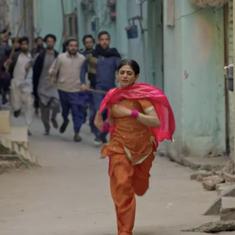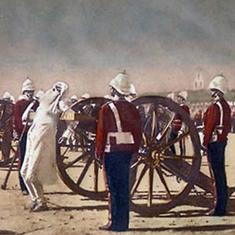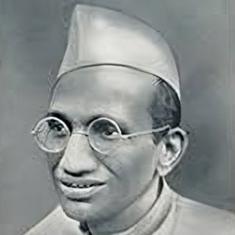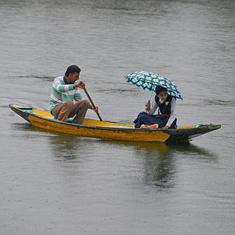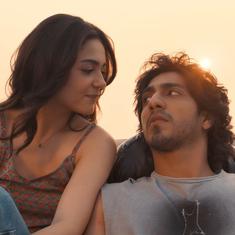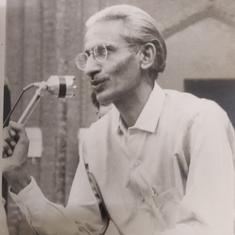This article is interesting and a much-needed issue has been discussed (“Mumbai Commuter Rail division: Some ideas on fixing the commercial capital’s lifeline”). I have been living in Mumbai for the last 72 years and have been a Mumbai local commuter since 1971. The main problem with western and central railway is the time table and stoppages of fast trains. A large section of the population on the western line has moved beyond Borivali and there is a strong need to change the time table.
My suggestions are:
Start a shuttle between Borivali (platform number three) and Virar (platform number 1) with 15 minutes frequency.
Make all Virar fast trains nonstop between Dadar and Bhayander
Extend all Borivali fast trains to Bhayander/Vasai Road.
This will ease crowding in Virar-bound trains, which is a major problem. – Ram Iyer
***
The article mentions that the estimated cost for the 33.5 kilometre-long Aqua Line is Rs 37,276 crore, ie Rs 1,000 crore per route-kilometre.
The thumb rule in construction of metro lines across the world, including all costs, is Rs 100 crore per route km for terrestrial lines, Rs 200 crore per route km for overhead lines and Rs.400 crores per km for underground lines. Therefore, we seem to have spent twice as much in building the Aqua Line.
Moreover, with development of tunnel boring machine technology, building underground metro lines has become much more feasible and cheaper. It also enables easier alignment of routes and avoids land acquisition problems and disturbances to existing built up areas. This is one area which the article misses out. – Sushil Prasad
Your article about Margarita Phipps and Harriet White Fisher was very interesting (“When cars were still rare, two US women decided to experience India from behind the wheel”). I am not familiar enough with Phipps to comment on her, but I must correct you about something in regards to Harriet Fisher. I have written a biography of Harriet Fisher which will be published later this year.
You said Harriet drove around the world in her car and across India. Harriet certainly traveled around the world by car, including a long drive in India. She visited the people and places you mentioned, but she did not drive the car on the trip. She could drive and often drove in the United States and In Italy, where she maintained a large home on Lake Como. There is some indication she gave a demonstration ride in Calcutta to show Indian women that a woman could drive. That drive, if it actually happened, was only in the city, probably for no more than a few miles.
All of the driving on the trip was done by Harold Fisher Brooks, a superintendent at Harriet’s factory. Harriet herself confirmed this fact more than once and that information is documented in newspaper interviews. It is also documented in the diaries, letters, and journals that Brooks left behind.
The actual number of miles driven on the world trip was closer to 20,000, although the exact mileage is unknown because the car’s odometer was broken for a while. It’s nice to see that someone remembers Harriet and wants your readers to know about her. – Frank Comstock
Ruskin Bond at 90
Reading this excerpt felt like sitting beside a wise, gentle storyteller who still has a twinkle in his eye (“‘I am still writing for the lonely soul’: At 91, Ruskin Bond looks back at his literary life”). Ruskin Bond’s honesty about his love for writing, his reflections on the simple joys of life – like food and solitude – and his empathy for “lonely souls” is deeply moving. What touched me the most is his determined commitment to writing, even at the age of 90. There’s hope in knowing that his words continue to find their way into the hearts of readers who feel unseen or unheard. It’s as if he writes not just to tell stories, but to tell the same unseen and unheard that he cares for them. This piece reminded me why I return to Ruskin Bond’s writing time and again – it is gentle, profound, and human. – Irene Daniel
Biased articles
Please read the articles you publish (“Indus Water Treaty suspension: The dangerous consequences of hydro-politics”). This is one such example of fake-one sided opinions that dramatise the issue. Please refrain from publishing such articles and ensure careful editorial review. – Raj B
Every piece of news has its own ideology to push onto the public (“Why are Bangladeshis turning against India?”). But it should also provide accurate information – for instance, all the financial aid India has provided to Bangladesh. Bangladeshi migrants are illegals, India must not accept them. The writer refers to the Babri Masjid, but I hope he studies what was in its place and why the masjid was built there. Then there is mention of Hindutva like it is a terrorist organisation. Any country where immigrants have contributed more are Indians or Hindutva people. It seems you don’t like some religions. I hope you will change. – K Sai Manish
Why not capitalise ‘kathak’?
This was a nice recap of a bygone era and artist, though there is one concern: why is Kathak with a small “k” (“In a world consumed with innovation, Manjushree Chatterjee is the epitome of old-style kathak”)? Is it an editorial decision or are budding arts writers blindly following western dance politics and hegemony wherein “western” dances like Flamenco or Salsa are mainstream (written with caps) but Asian or other non-western dance forms are in small letters?
I’m told this happened largely because Western dictionaries, perhaps compiled by staffers with no clue of Indian or Asian cultural traditions, have in their wisdom decided Kathak or Bharatanatyam or Odissi are regional forms. Millions worldwide learn Kathak or Bharatanatyam, so by that logic Kathak or Bharatanatyam are a mainstream form now. My concerns are academic and cultural. – Ashish Mohan Khokar
Corporate deception
This is one of those classic cases (“Near Adani’s Jharkhand power plant, villages still struggle for basic health, education”). Companies follow a common template of choosing remote places that lack basic amenities but have vast stretches of land, which are largely cultivable.
As the landowners, often poor farmers, refuse to part with their assets, company representatives compel them into giving away their lands with promises that appear to address the villagers’ basic needs. The promises are mostly verbal. This is the sorry state of affairs in our country where the poor continue to get poorer and the rich richer. – Srinjaya Bhattacharya
Green energy, minerals
The article sadly shows the “bits-and-pieces” approach of the government towards solar energy, specially, in rural India “(‘There is no darkness now’: Solar power helps India’s health centres bridge infrastructure gap”). This results in multiple solar facilities across rural India to power pumps, healthcare facilities, schools and homes while ignoring the potential of rural India in the country’s zero-pollution green energy transformation. The government must adapt a holistic approach to eliminate pollution while transforming energy access. – Ajay Goyal
***
Good piece (“How India could cut its reliance on China for rare earth minerals”). Are there rare earth minerals found in India? – Holiram Terang
